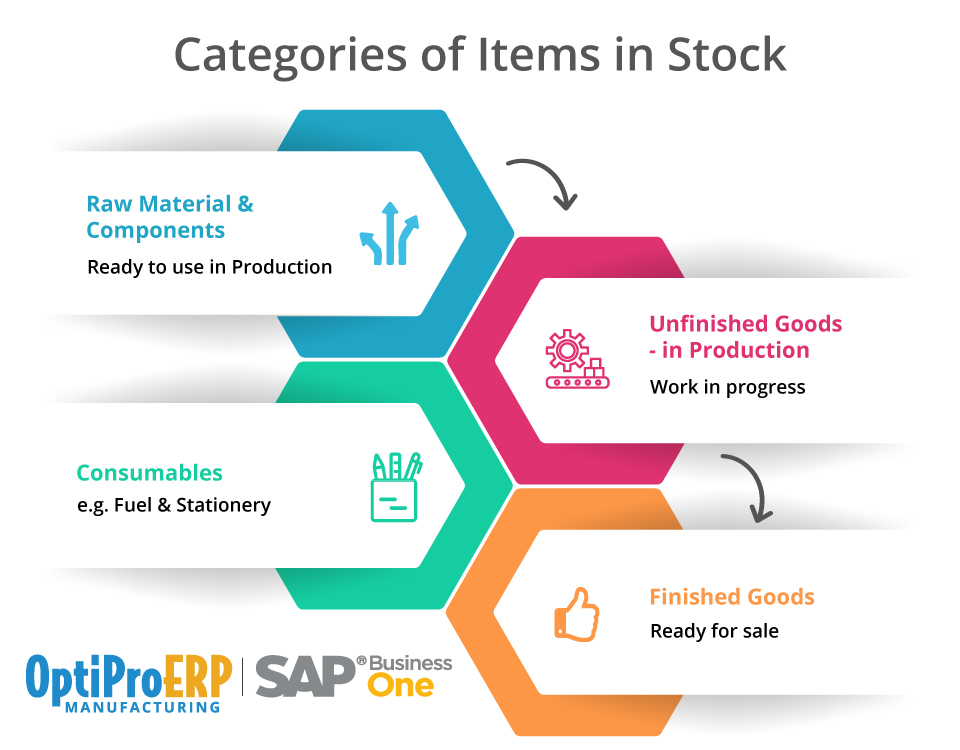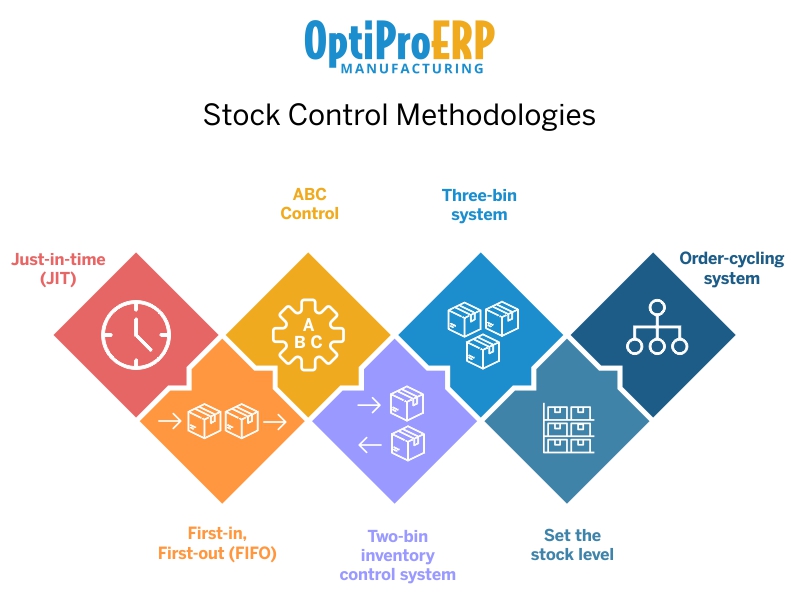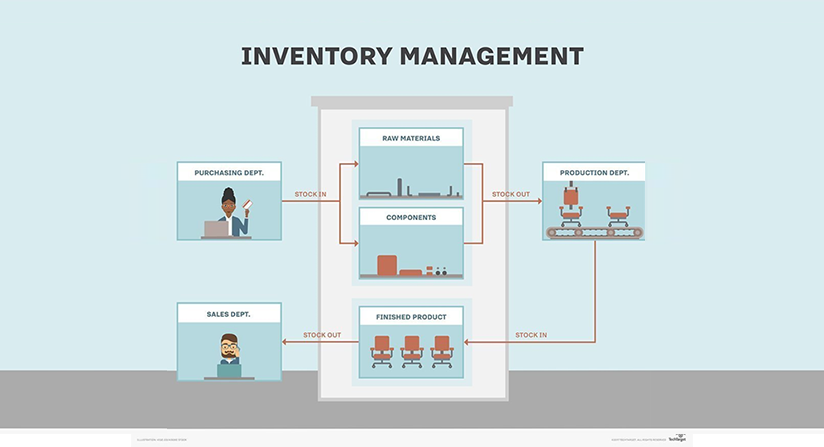“The most dangerous kind of waste is the waste we do not recognize.”
– Shigeo Shingo, leading expert (Toyota Production System)
In this dynamic manufacturing world, customers’ demand is unpredictable and inconsistent. Manufacturers struggle a lot while managing their stock, inventory operations, and transactions. When we talk about stock control, it is the ultimate process of making a minimal investment in the inventory while addressing the customers’ demand on time.
In simple words, stock control, or inventory control, is used to show how much stock you have at any one time, and how you keep track of it. It applies to every item you use to produce a product or service, from raw materials to finished goods. It covers stock at every stage of the production process, from purchase and delivery to using and re-ordering the stock.
Items in stock can be broadly classified into four categories:

Stock control methodology for one category may not be suitable for another category. You may choose one method or a mixture of two or more if you have various types of stock.
As a result, different stock control methodologies are adopted by businesses as per their specific needs. In addition to leveraging the most suitable stock control methodology, as a manufacturer, you should also seek a sophisticated software solution that can help your company perform better and more efficiently. Without stock control software, manufacturers may face stock-outs, spoilage, obsolescence, and other adverse effects.
Therefore, to ensure stock is maintained accurately, you should –
- Label every material you procure
- Use the latest technology like – RFID tag, barcode, and QR code – for labeling
- Place the fast-moving products in an easy to access section or bin
- Minimize unauthorized and unnecessary personnel in the warehouse
- Identify minimum stock level (also called re-order level)
- Regularly review your stock
- Use a powerful inventory management software
Investing in an inventory management software solution can do wonders for your business. ERP software, which has inventory management within it, is considered one of the most reliable and powerful solutions, especially for the manufacturing sector.
Enterprise Resource Planning (ERP) is a suite of business management tools that manages and integrates activities such as financials, accounts, sales, procurement, inventory, reporting, and human resource activities. An effective ERP software manages all stock efficiently and lets you create a streamlined inventory to increase your bottom line.
To ensure operations are optimized, manufacturers opt for the most suitable methods to nurture lean manufacturing while reducing waste and increasing ROI.
Below are some of the most commonly used methods of stock control with a quick overview of each:

1. Just-in-time
Just-in-time production or just-in-time manufacturing is a stock control method that is primarily focused on reducing the production flow times and response times from suppliers and to customers. Under JIT, manufacturers order inventory when it is needed so that carrying and storage cost is reduced. This approach allows you to deliver the accurate amount of quantities required to complete current production. Manufacturers order stock a few days in advance before selling it. However, this can be a dicey game if the suppliers are not trustworthy and are prone to delay product delivery.
2. FIFO (First-in First-out)
FIFO is a default method to control stock. It simply means those items that are received first ought to be shipped first. It ensures that perishable stock is used effectively. However, in discrete manufacturing, we rarely work with perishable goods. But, FIFO is considered suitable for discrete manufacturing, to avoid obsolescence of products.
3. ABC Control
Sometimes known as the selective inventory control method, ABC control analysis classifies a wide range of inventory items such as manufactured goods, spare parts, unfinished goods, or finished goods into three categories – A, B, and C.
A-level products are critically important and are usually included in the top 20% of the products that contribute approx. 80% of sales.
B-level products, less in comparison with the A-level products, and
C-level products contribute the least to the company’s bottom line.
4. Two-bin inventory control system
As the name suggests, a two-bin inventory system is divided into two bins where the first bin holds the majority of stock and is used to deliver goods. When this bin is stocked completely, the remaining stock is kept in the second bin. Now, the second bin is used to fulfill orders until new stock arrives. In other words, the first bin has the working capital and the second bin is used for fallback. Typically used for small or low-value items, a two-bin inventory control system prevents spoilage of products.
5. Three-bin system
A three-bin system is an extended version of the two-bin system method that stores the running stock in the first two bins and keeps the rest of it as a reserve in the third bin. To encourage lean manufacturing, manufacturers do not ask for more items from the supplier until the first bin has been emptied. When items from the first bin are used up, it is replaced with the stock from the second bin.
6. Set the stock level
To avoid overstocking or stock-out, it is always better to set a safety stock level to have a strong backup for every item. It is always good to be prepared for the worst and anticipate for the best. To manage optimum stock, it is always a wise decision to set the lower and upper inventory levels, so that, when the inventory runs down to the minimum level, you can refill the stock and bring it to the highest level. As a manufacturer, you can set the minimum and maximum inventory levels as per the specifications of the items and their demand.
7. Order-cycling system
How convenient will it be when the software automatically checks the inventory at regular intervals of time?
Economic Order Quantity (EOQ) is a standard formula used to arrive at a balance between holding too much or too little stock. It’s quite a complex calculation, so you may find it easier to use stock control software.
OptiProERP is a reliable software solution that monitors and checks the inventory for you. It automatically reorders the product, if there are not enough items in the inventory. For example, after every 30 days, the software can check the number of stocked items for you and ensure that there is sufficient stock until the next time it is being delivered or used.
Wrap-up
“Out of clutter, find simplicity. From discord, find harmony. In the middle of difficulty lies opportunity.” – Albert Einstein
Stock management methodologies are used to enhance planning, transparency, and coordination between the warehouse personnel. These methodologies facilitate automation and allow the businesses to meet customer expectations by delivering precise material, on schedule. Therefore, it is always advised to select suitable ERP software for stock control, which can enhance planning functions and promote proper coordination.
OptiProERP offers a streamlined solution for your business needs by providing inventory information quickly, efficiently, and accurately. With robust manufacturing ERP software for stock control, you gain the insight needed to make better and timelier business decisions. To know more about OptiProERP, get in touch with us at info@optiproerp.com.
Follow Us





